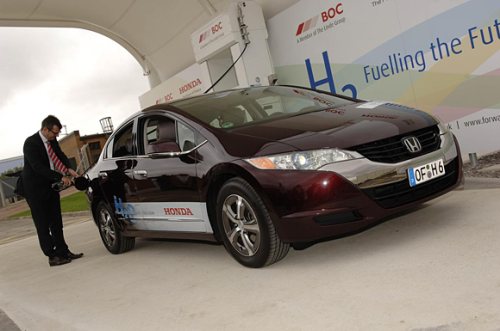
The new hydrogen station at Honda in Swindon is open to anyone developing or using hydrogen powered vehicles, both with hydrogen internal combustion engines or fuel cells. It can fill vehicles at either 350 or 700 bar (5000 or 10 000 psi), the two standard filling pressures adopted by the world’s major vehicle manufacturers.
The venture is a partnership between Honda, BOC – a member of The Linde Group – and economic development company Forward Swindon. The station aims to encourage the development of both hydrogen powered vehicles – such as the Honda FCX Clarity fuel cell car – and the hydrogen refueling infrastructure to support them.
It also creates a strategic link half way along the M4 between London and Swansea. As a fully operational, commercial-scale hydrogen station using tested technology, it can be replicated across the UK – and so create the essential network necessary for the widespread uptake of hydrogen powered transport.
The innovations at the new BOC station include the ability to refuel vehicles back-to-back from a bank of hydrogen cylinders, i.e. vehicles can be fueled one after another without having to wait for more hydrogen to be generated.
The station looks just like a conventional filling station, and the time to fill a vehicle is comparable with conventional fuels. The Honda FCX Clarity, for example, takes less than five minutes. For the consumer, the experience should be very similar to refueling at a normal petrol station.
‘Hydrogen fuel cell technology is the ultimate transport solution: meeting environmental demands but also delivering the range and performance that customers expect,’ says Thomas Brachmann, Head of Electrical Powertrain R&D at Honda.
‘The cooperation on this project between vehicle manufacturers like Honda, infrastructure providers like BOC, and the public sector can be a blueprint for future development,’ continues Brachmann.



